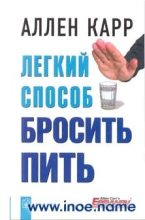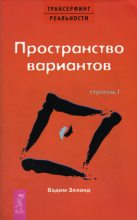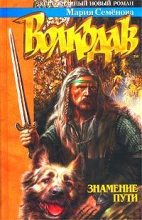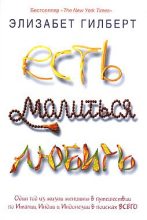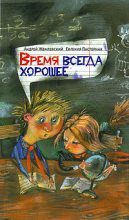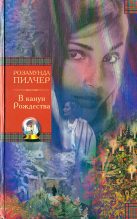- 1
- 2
- 3
- 4
- 5
- . . .
- последняя (456) »
Как известно, одним из решающих факторов перехода к устному общению в изучении любого языка является овладение повседневной разговорной речью. Усвоив основы грамматики, изучающий стремится в первую очередь овладеть наиболее употребительными в обычной повседневной жизни выражениями, конструкциями, фразами. Чтобы облегчить эту задачу, русский язык в, словаре подается читателю через его родной, английский язык. Английский словник представлен словами и словосочетаниями, широко употребительными в повседневной жизни англичан; в словарь вошли также некоторые термины, часто встречающиеся в разговорной и письменной речи. Таким образом, словарь будет интересен и для русского читателя, изучающего английский язык. Он может быть полезен и преподавателям английского языка.
В помощь иностранному читателю в словаре дается целый ряд сведений о русской грамматике в виде помет, пояснений, грамматических комментариев. Особое внимание уделяется трактовке вспомогательных глаголов с учетом их практического перевода на русский язык.
Словарь является совместным изданием, результатом международного сотрудничества между советским издательством «Русский язык» и английским издательством «Пергамон Пресс». Как автор, так и редакторы словаря максимально стремились к тому, чтобы оба языка — как русский, так и английский — были представлены цаиболее живо и соответствовали современным литературным нормам.
При работе над словарем широко использовались словари Collins-Robert French-English English-French Dictionary (1979) и Collins Spanish-English English-Spanish Dictionary by Colin Smith (1975), в которых принципы отбора английского словника близки принципам данного словаря. Орфография английских слов дается также по этим словарям. Использовались в качестве справочников также следующие словари: A. S. Hornby, Oxford Advanced Learner's Dictionary of Current English (1974), «Большой англо-русский словарь» в 2-х томах под ред. проф. И. Р. Гальперина (М., 1980), «Словарь русского языка» С. И. Ожегова (М., 1981), «Орфографический словарь русского языка» (М., 1979).
Замечания и предложения просим направлять в издательство «Русский язык» по адресу: 103012, Москва, Старопанский пер., 1/5.
BIBLIOGRAPHY
For the English Vocabulary I have relied throughout on the Oxford Advanced Learner's Dictionary of Current English (A. S. Hornby). Later J met Professor Colin Smith; I have made much use of the English side of his English-Spanish Dictionary (Collins) and after 1978 of the English side of the Collins-Robert Dictionary. I was particularly encouraged to find that my own approach to lexicography coincided so closely with that of Professor Colin Smith whom I regard as a pioneer in his approach to modern two-way lexicography. I have also found very helpful Volume I of the Oxford Dictionary of Current Idiomatic English (Cowie and Mackin).
On the Russian side my first acknowledgement must be to the admirable Dictionary of the Russian Language by Professor S. I. Ozhegov. I have also used largely the mammoth two-volume New English-Russian Dictionary of Professor Galperin and his many colleagues. I have found Professor Marcus Wheeler's lucid Oxford Russian-English Dictionary an invaluable check-back, and very helpful in its admirable layout of grammatical points. For grammar and syntax I have made extensive use of Russian Syntax (Borras and, Christian) and for quick reference I still use the elementary, but lucid and comprehensive New Russian Grammar of Anna H. SemeonofT (first published in 1934!).
INTRODUCTION
The user.
Coverage (lexis).
The language.
Illustration.
Layout.
Order within an entry.
Translation of headwords.
Grammatical indications.
Stylistic and Field labels.
Indicators of meaning.
NOTES FOR USERS
Order of the entries.
Pronunciation.
Use of the tilde.
Use of the hyphen, and of the hyphen plus vertical stroke.
Use of brackets.
Indicating alternatives: the diagonal stroke, the comma, and "or".
Grammar: treatment of nouns.
Grammar: treatment of verbs.
Verbs of motion with two imperfectives.
The translation of "it".
INTRODUCTION
THE USER
This dictionary is primarily a practical one for the student whose approach to the Russian language will be through English, irrespective of whether he lives in Britain, North America or elsewhere. The vocabulary comprises the words which the average educated man might want to use in speaking or writing Russian, including the simple technical terms in common use.
The criterion for method has been ease in use, or, in the words of James Murray, "eloquence to the eye". Clutter in the text reduces clarity and adds to eyestrain. For this reason cross-references are avoided as far as possible. Much use is made of clearly marked divisions and the dictionary is well provided with indications of style and shades of meaning, and with occasional grammatical notes and cautions. The student should thus be able to find what he wants easily and quickly, without constant recourse either to his grammar or to a Russian-English dictionary.
There is a wealth of illustrative phrases, couched in the language of "everyday** and these should help to give the student the feel of spoken Russian.
COVERAGE (LEXIS)
The nature of the dictionary has determined the vocabulary. Very full treatment has been given to the few basic words which figure so largely in our daily use—do, get, give, go, make, put, way, etc., as also to prepositions. Special attention is paid to verbs in combination with prepositions or adverbial particles, which are usually translated by Russian verbal prefixes. These are of the first importance to the student. All the commoner senses of the selected English headwords have been covered, but not necessarily rare ones. Thus for instance when a verb is nearly always used in the transitive form, although the intransitive form exists (or vice versa), the rare usage may be ignored.
To 'save space, abstract nouns and adverbs derived directly from adjectives are not given, e.g. tender adj нежный is given, but not tenderness n нежность, nor tenderly adv нежно.
In groups of cognate words, such as biological, biologist, biology, one or more of the terms may be omitted. Similarly English words which are translated by direct transliteration into Russian are often omitted, e.g. morgue морг, or nymph нимфа. In such cases it will be easy for the student to form or find these for himself.
THE LANGUAGE
Emphasis has been given to the spoken language—both everyday colloquial uses and more specialized uses, e.g. the' language of the committee man. Many of the examples are given in the second person singular indicating exchanges between friends of the. same age, or colleagues of the same rank, or members of a family. A strong distinction is made between colloquial expressions and slang, the latter being included only if it is well established, partly because it can date so quickly, partly because it is hard to appreciate its exact tone in a foreign language. Translations are as far as possible stylistically matched. Where there is no true equivalent of an English expression such as ghost writer, it has seemed better to omit the term rather than to offer explanations or cumbrous circumlocutions, which the student could equally well form for himself if need arose.
ILLUSTRATION
Translation by single words seldom enables the student to use these words in a living context. The illustrations are designed to provide such a context. They also show the difference between the two languages in construction and grammar where rules apply. For example, translation of the English predicative adjective does not always in Russian follow directly from the attributive form, e.g. unconnected sentences несвязные фразы, but the two events are quite unconnected эти два события никак не связаны между собой.
Illustrations also serve to familiarize the student with Russian word combinations and word order, and with the typical flow and rhythm of the Russian sentence, none of which can be deduced a priori. Though word order in both languages is flexible, varying according to emphasis, nevertheless there are standard patterns of order where the two languages differ, e.g. she walked in her sleep last night сегодня [NB] ночью он ходйла во сне. Again the invariable English cadence is supply and demand, but the Russians prefer спрос и предложение.
LAYOUT
All English words and phrases are printed in bold type. Indicators (of style, meaning, etc.) are printed in italics. Long entries are divided; each division is numbered, begins on a new line and is inset. But short entries which can be taken in at a glance, may contain no
- 1
- 2
- 3
- 4
- 5
- . . .
- последняя (456) »
